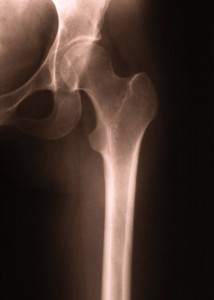Many people have hips that have been damaged by a fracture, arthritis, or other conditions. This can make walking or getting out of a chair difficult and painful. The hip may be stiff and inflexible, making you feel uncomfortable while resting.
If you have been contemplating undergoing total hip replacement surgery, this information will help you understand the causes of hip pain, the benefits of the surgery, what to expect from the procedure, and what exercises and activities you should avoid after your surgery.
What are the common causes of hip pain?

Arthritis
The most common cause of chronic hip pain and disability is arthritis. Osteoarthritis, rheumatoid arthritis, and traumatic arthritis are the most common forms of this disease.
Osteoarthritis
Osteoarthritis is an age-related “wear and tear” type of arthritis that usually occurs in people who are over 50 years of age.
The cartilage cushioning the bones of the hip joint wears away, leaving the bones to rub against one another. This friction type of rubbing leads to hip pain and stiffness.
Rheumatoid Arthritis
Another type of arthritis is rheumatoid arthritis. This is an autoimmune disease where the synovial membrane becomes inflamed and thickened.
Rheumatoid arthritis is a type of “inflammatory arthritis,” and this chronic inflammation damages cartilage and leads to stiffness and pain. Post-traumatic arthritis is a type of arthritis that can follow a serious hip injury or fracture. The pain and stiffness occurs when the cartilage becomes damaged over time.
Other causes of hip pain include avascular necrosis and childhood hip disease. Avascular necrosis occurs when an injury, such as a fracture or dislocation, limits the blood supply to the upper head of the femur bone (the thigh bone).
The surface of the bone collapses due to lack of adequate blood supply and arthritis sets in. Childhood hip disease can lead to arthritis also. This happens when the hip cannot grow normally and the joint surfaces are affected.
What Happens During a Total Hip Replacement?
A total hip replacement is also referred to as a total hip arthroplasty. This procedure allows the orthopedic specialist to remove damaged bone and cartilage and replace it with prosthetic components. Basically, the damage to the top section of the femur is removed and replaced with a metal stem. This femoral stem can be press fitted into the bone or cemented.
A metal or ceramic ball is then put on the upper portion of this stem to replace what was removed. The damaged cartilage surface is also removed and screws or cement holds the new prosthetic socket in place.
Replacement surgery can also be done through an anterior hip replacement. The anterior approach is less invasive than traditional open hip surgery, as the muscles are moved, instead of detached.
Doctors Charles Peterson II, MD and Philip Downer, MD both perform anterior hip replacements at Orthopedic Specialists of Seattle. Talk to your doctor to find out the best surgical approach that is right for you.
Am I a Candidate for Hip Replacement Surgery?
The decision to have hip replacement should be one made not only by you, but with input from your family members, your orthopedic specialist, and your primary care doctor. There are no age or weight restrictions for this procedure and recommendations for surgery are based on your pain and disability.
Total hip replacements have been done successfully on people of all ages from the young teen with juvenile arthritis to the elderly patient with degenerative arthritis of the hip. There are a few reasons why your doctor may recommend a total hip replacement for you.
These include:
- Hip pain that limits everyday activities, such as walking or bending
- Hip pain that continues while resting, either day or night
- Stiffness in a hip that limits the ability to move or lift the leg
- Inadequate pain relief from anti-inflammatory drugs, physical therapy, or walking supports
What Activities Should I Avoid and What Can I Do After Hip Replacement Surgery?
There will be a few things you will have to avoid after a total hip replacement. For 6 to 12 months, you should not pivot or twist the involved leg. Also, you cannot cross the leg past the midline of your body nor turn that leg inward. Bending at the hip past 90 degrees is also to be avoided.
Your physical therapist will provide you with adaptive equipment, special skills, and techniques to help you follow these guidelines and precautions while you heal. Even after your hip joint has healed completely, sporting activities and heavy usage work activities should be avoided.
Here are some helpful tips for maneuvering after this surgery:
- Keep stair climbing to a minimum and make arrangements so you will only have to go up and down the steps once or twice a day.
- Sit in a firm, straight-back chair. Recliners should not be used.
- To avoid falls, remove all throw rug, keep floors and rooms clutter free, and hold to objects when walking.
- Use an elevated toilet seat because this will help keep from bending too far at the hips.
- Keep enthusiastic pets away until you have healed completely.
Ask your doctor before returning to such activities such as sexual activity, exercise, and driving.
Find OSS on Facebook and follow on Twitter to keep up to date on new articles and news.

